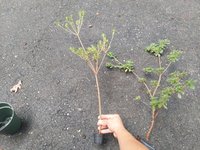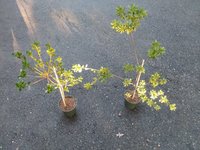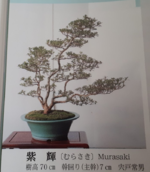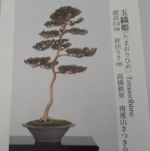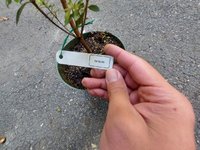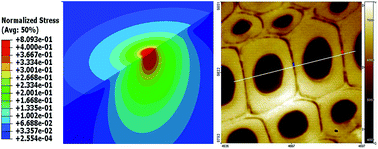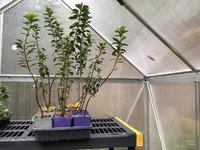@Glaucus Here’s the best explanation/rational concerning the timing of azalea wiring.
Please let me know if this makes sense.
When to wire.
Bending is best done in mid Feb through April, at least in the Puget Sound region. This gives the best results over a growing year. It’s a time with the best combination of sap flow starting to rise, the wood becoming more supple, the buds and foliage being small. it’s easier to route the wire and bend the trunk.
After Feb/April wiring the cells damaged from bending are repaired and sap flow corrected/rerouted just as it is starting. The sun is low. The plant is not at maximum photosynthesis / growth levels and no shading is needed. From here on an entire season of growth in the desired style is made at the maximum photosynthetic potential possible.
Wiring May through July wiring is a trade off. After flowering pruning wiring is the second easiest time to wire due to the reduced foliage. Yet while trimming back, while making wiring easier, it also reduces the plants productivity at a time of maximum possible photosynthetically driven growth. More importantly, the cellular damage to the plant during wiring requires repair at a time the canopy reduction reduces the azalea’s ability to produce the energy to do this task. Also, after bending in mid-season the azalea is placed in the part shade and watered less as too much sun may damage the plants remaining foliage due to the reduced water needs from pruning and bending. Azalea wired in mid season proceed forward repairing the cells, maximizing sap flow...then pushes growth forward in the new style for the remainder of the year. A season of trade offs, yet another time to wire.
One could say plants wired in early spring also are pruned in mid-summer, what’s the difference? Bending in mid-season diverts energy at a time of maximum growing potential to repair the cellular damage from bending. An azalea merely pruned in mid-season pushes its growth forward at the maximum after pruning rate possible.
One can wire most any other time, except I’d lay off August for big bends in all but the cultivars that possess the supplest wood, i.e. Kazan and the Osakazuki family. That’s when the most damage to the ‘lifeline’ as Nakayama calls it can occur.
Wiring in Sep/Oct is at the time the energy of the tree is focused on vascular growth, consolidating energy in the roots and trunk… thickening the trunk/branches. Wiring then slows/halts trunk thickening due to the cellular damage caused by the bending process and the falling sap flow. Recovery isn’t easy as the next spring ‘s growth will focus on the leaves and buds.
Bending in winter, as you mentioned, is more difficult than bending in full spring/summer, as the sap is down. Being in winter requires the proper gauge of wire. Properly wired, potential damage incurred is also lower, but may not show up until spring. The advantage is an azalea wired during winter can also achieve maximum growth potential for the entire growing season.
Whew! Let me know what you all think about this. I’m going to use it in another venue!
best
DSD sends

